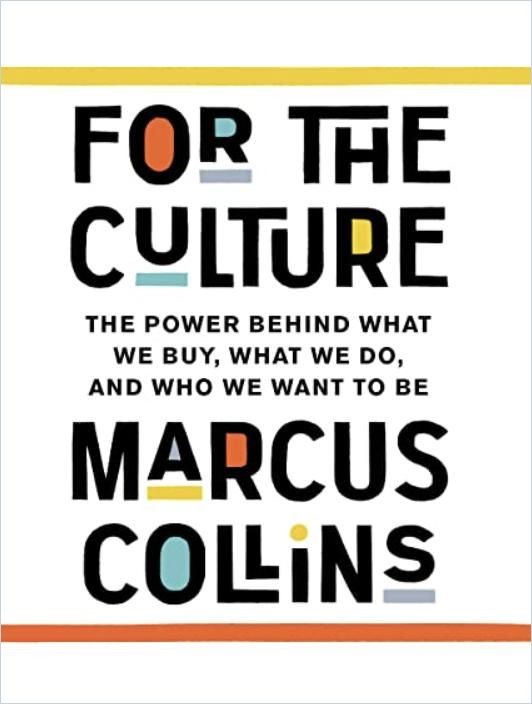Professor Dr. Marcus Collins discusses marketing as cultural anthropology, basing much 0f his conversation on Christian teachings.

For the Culture
Dr. Marcus Collins, a clinical assistant marketing professor at the Ross School of Business, University of Michigan, urges you to approach marketing with the mindset of an anthropologist so you can learn which groups share your beliefs and understand their tribal cultures and lexicons.
Beliefs and Identity
Brands influence cultural norms. From politics and technology to news shows, niche groups gain or reinforce part of their identity through the brands they adopt as part of their “cultural practice.” For example, early in the development of photography, freezing in a stiff pose and looking serious as the camera recorded you for posterity was the usual practice. When Kodak began marketing photography as a way to remember happy occasions, smiling in photos became the norm.
When counterculture urbanites chose an unlikely favorite beer, Pabst Blue Ribbon, the company responded by sponsoring bike messenger rodeos and art gallery openings.
[Pabst Blue Ribbon] actively lived out its beliefs as an outsider brand that deviated from the norm.
Dr. Marcus Collins
Sociology pioneer Emile Durkheim defines culture as a “system” that explains a distinct group of people. Culture encompasses shared beliefs, rituals, language, and “artifacts” such as symbols or clothes. When people within a culture veer from its system, they face “social consequences.”
Know Your Tribe
When members of a group adopt your idea or product and regard it as embodying a facet of their culture, they share it with like-minded people. At that point, what your industry or product is or whether you sell to consumers or other companies no longer matters. Instead, focus on the people you wish to reach and their culture, their strongest influence.
Define the individual tribes, communities, or groups aligned with your brand and then prioritize who you should try to reach.
A “congregation” includes familial tribes that believe in the same ideas. The Patagonia outerwear company, for one, knows its congregation, the people who share its beliefs. The company once ran an ad asking customers not to purchase Patagonia products they didn’t need. And, in 2022, instead of taking their $3 billion company public, Patagonia’s owners put it in “a trust and non-profit organization” to support environmental activism.
Audiences buy products because of their function. Congregations buy products as evidence of their beliefs.
Dr. Marcus Collins
To make sure your targeted audience hears what you intend to say, learn how they are most likely to interpret and take meaning from your words and actions.
People may self-identify based on where they live, what college they attended, or their sports, hobbies, jobs, or interests. That identity is the “cornerstone” of their culture, which combines three systems: worldview, the way of life they share with their compatriots, and the elements that make up their creative production.
The first system, a group’s worldview, encompasses the beliefs and ideologies that shape it. People identify with groups that share their values and ideas. Tribal beliefs and values are not easy to discern; often, you must consider a group’s actions to understand its culture. To influence how the members of a group behave and to tie your brand to them, you must first identify and understand their beliefs.
The second system, a “shared way of life,” is made up of group members’ language, their behaviors, and the daily habits that derive from their beliefs. A group’s artifacts – clothes, tools, and symbols – cement each person’s sense of belonging and membership. Each cultural group relies on a lexicon of the speech, clothing, manners, and activities its members understand.
The third system, “cultural production,” is an aligned community’s creative output, such as its toys, food, hairstyles, art, movies, fashion, and music. These identify the community as a unified whole.
Cultural Meaning
Marketers create “fashioning” systems to give their products meaning. For example, “high-esteem” fashioning works through association, using such vehicles as ads featuring certain celebrities or striking visual effects. “Fringe society fashioning” comes into play when groups outside the mainstream collaborate. For example, the rainbow flag came to stand for gay pride after the LGBTQ+ community redefined its meaning.“Peer fashioning” emerges when a tribe defines its own meaning – as exemplified by the hip-hop community – instead of taking its identity from ads, news, sports, or celebrities.
If you misunderstand a group’s cultural codes or miss a change in its argot or artifacts, your marketing will fall flat. Such “incongruence of meaning” happens when two people experience the same event and interpret it differently.
Technological Clues
The internet provides clues to help you determine how to engage a tribe and stay abreast of its language and symbols. Using public, online information, researchers can observe different groups.This “social listening” — called “netnography” — helps you interpret a group’s sociocultural elements and explore how its members internally determine meaning.
Use the internet – for example, X (Twitter) Advanced Search, to hone in on a tribe’s focus and way of conversing. Using those findings – which may require reading hundreds of posts – move on to Reddit to explore what group members discuss among themselves. Reddit groups have “subreddits” where members talk about certain aspects of the main group’s interest. For example, if you’re researching vegans, you may find subgroups discussing “VeganFitness” or plant-based diets.
As you explore, consider why the members of this tribe are writing about these subjects. Immerse yourself to understand how their posts reflect their emotions and worldview.
Advertising gets our attention; people get us to move.
Dr. Marcus Collins
From Greek mythology to the Bible to hip-hop narratives, stories shape what communities believe and how they act. Tribes as disparate as the adherents of a religion, hip-hop fans, or horror movie buffs use stories to define themselves and build their communities.Before you promote your product, candidate, or idea to a tribe’s members, you must understand its inner workings, language, and myths.
Marketing and Christianity
Dr. Marcus Collins knits theory and practice together to explain how to understand your market’s culture, how to find your tribe in the digital world, and why both culture and tribe matter. He is an interesting, clear writer and explains very usefully how and why people generate identities you can address with specificity in your marketing. However, Collins, who notes that he is a devout Christian, bases many of his examples on his religion. Whether you feel entirely at home with his marketing discussion may vary, in part, based on how strongly you share his beliefs.














